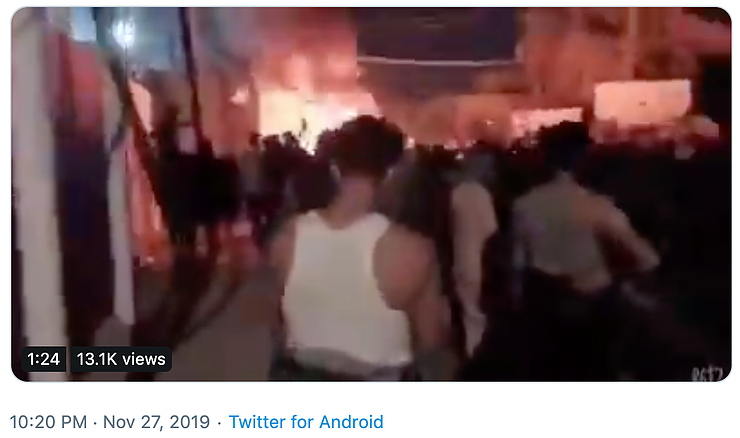
Two months of protest have reached what could be a turning point or crescendo as large movements of Iraqi forces linked to the Popular Mobilization Units (PMU) and other security units were deployed in the south following the burning of the Iranian consulate in Najaf on Wednesday night. Thursday night brought major clashes in the city of Nasiriyah (الناصرية) with dozens reported killed and hundreds injured.
The clashes on Thursday night, November 28, are considered some of the bloodiest since the protests began in early October. The protests across Baghdad and southern Iraq increased on October 25 and have continued throughout November. Protesters have targeted symbols of Iran in Iraq throughout the demonstrations, including burning the outside wall of the Iranian consulate in Karbala on Sunday, November 3. A similar but smaller “massacre” took place in late October when up to 14 were reported killed in Karbala during clashes. The clashes in Karbala on October 28, November 3 and November 13, in the Shi’ite holy city, are part of the network of clashes in symbolic and important Shi’ite cities in southern Iraq. Iraq has formed various “crisis cells” to deal with the latest developments but different narratives and overlapping security and militia forces are fueling unrest while protesters’ demands are not being answers. Muqtada al-Sadr, leader of the largest political party, has called on the government to resign. The Prime Minister’s officer reportedly offered parliament his resignation on November 29…
To read more visit MECRA.
- Russia Says Taliban Ready To Sign Peace Deal
- Don’t Look Now But Where Are The Violent “Marches Of Return” On The Gaza Border?

